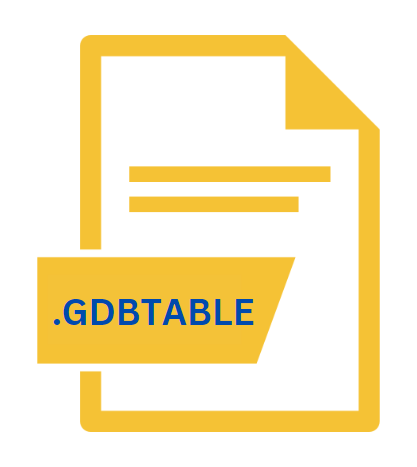.GDBTABLE File Extension

Geodatabase Table File
| Developer | N/A |
| Popularity | |
| Category | Data Files |
| Format | .GDBTABLE |
| Cross Platform | Update Soon |
What is an GDBTABLE file?
.GDBTABLE file extension holds significant importance. This file type is associated with geodatabases, which are specialized databases designed to store, query, and manipulate spatial data.
The .GDBTABLE file serves as a table within the geodatabase, containing crucial attribute information related to geographic features. In this article, we delve into the origins, structure, conversion methods, and usage of .GDBTABLE files.
More Information.
The history of .GDBTABLE files align with the evolution of GIS technology. In earlier GIS systems, data storage was often fragmented, with spatial and attribute data stored separately.
Esri introduced the geodatabase model to address this issue by consolidating spatial and attribute data into a single, cohesive structure.
.GDBTABLE files were introduced to store tabular data associated with spatial features, enabling seamless integration and analysis within GIS environments.
Origin Of This File.
The .GDBTABLE file extension is primarily associated with Esri’s ArcGIS software suite. Esri, a prominent player in the GIS industry, developed the geodatabase format to efficiently manage spatial data.
As part of the geodatabase structure, .GDBTABLE files emerged to store attribute data linked to spatial features.
File Structure Technical Specification.
.GDBTABLE files adhere to a structured format optimized for efficient data storage and retrieval. At its core, a .GDBTABLE file consists of rows and columns, where each row corresponds to a feature in the geodatabase, and each column represents a specific attribute or field associated with those features.
The file structure may include headers defining field names, data types, and other metadata essential for interpretation.
While the internal structure may vary based on the specific GIS software and version used, .GDBTABLE files are typically stored in a binary format optimized for performance and data integrity.
Advanced indexing and compression techniques may also be employed to enhance query performance and reduce storage requirements.
How to Convert the File?
Converting .GDBTABLE files to other formats may be necessary to facilitate data exchange or interoperability with non-GIS systems. Several methods can be employed for file conversion:
- Export Functionality: Many GIS software packages, including ArcGIS, provide built-in export functionality to convert .GDBTABLE files to commonly used formats such as CSV (Comma-Separated Values) or Excel.
- Scripting: Scripting languages like Python can be utilized to automate the conversion process. Libraries such as GDAL (Geospatial Data Abstraction Library) offer comprehensive support for working with geospatial data formats, including .GDBTABLE files.
- Third-Party Tools: Various third-party conversion tools and utilities are available, offering specialized functionality for converting .GDBTABLE files in different formats. These tools may offer batch processing capabilities and support for a wide range of output formats.
Advantages And Disadvantages.
Advantages:
- Data Integration: .GDBTABLE files enable seamless integration of attribute data with spatial features, facilitating comprehensive analysis and visualization within GIS environments.
- Efficient Querying: The structured format of .GDBTABLE files allow for efficient querying and retrieval of attribute data, essential for conducting spatial analysis and generating insights.
- Data Consistency: By storing attribute data within the geodatabase, .GDBTABLE files help maintain data consistency and integrity, reducing the risk of errors or discrepancies.
Disadvantages:
- Proprietary Format: .GDBTABLE files are associated with proprietary GIS software such as Esri’s ArcGIS, which may limit interoperability with other platforms or tools.
- Complexity: Managing .GDBTABLE files within a geodatabase require familiarity with GIS concepts and software, which may pose challenges for novice users.
- Dependency on Software: Accessing and manipulating .GDBTABLE files typically require specialized GIS software, limiting accessibility for users without access to such tools.
How to Open GDBTABLE?
Open In Windows
- Esri’s ArcGIS Desktop suite, QGIS, and open-source alternatives like GRASS GIS provide robust support for .GDBTABLE files on the Windows platform.
Open In Linux
- GRASS GIS, QGIS, and other open-source GIS tools cater to Linux users, offering comprehensive support for geodatabase files.
Open In MAC
- QGIS, a cross-platform GIS application, offers compatibility with .GDBTABLE files on MacOS, along with other GIS-specific software solutions.













